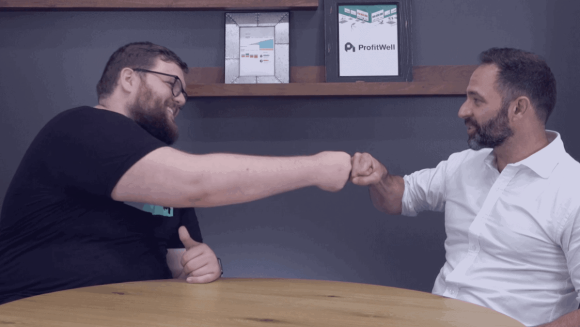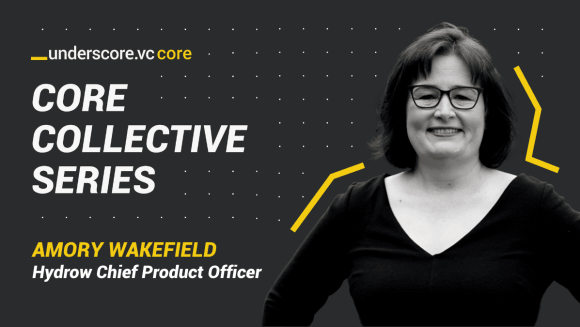This article was written by Rob Snyder, former co-founder of HourWork and current founder and CEO of Reframe, a provider of tactical training and fractional executives for early-stage B2B startups.
A friend recently came to me for go-to-market (GTM) advice. His company just raised their Seed round. At the time, they had about $200K ARR, very happy customers, and a differentiated product.
Their goal is to reach $1M+ ARR in the next twelve months. If they can achieve this, they’ll be likely to either raise their Series A or get to profitability and continue to scale the business. If not… things get scary.
Their “beachhead” customers were ex-consultants and ex-MBAs who were managing teams in large organizations.
Their challenge? The founders believed they needed to figure out how to expand beyond this beachhead. They were worried their ideal customer profile (ICP) was too narrow, because there are only a few thousand people who meet their beachhead criteria. They imagined saturating this market and revenue growth halting.
So what did they do?
They stopped focusing on GTM for their beachhead customers to test a bunch of different ICPs.
They fell into what I call the optionality trap: Trying to solve to multiple customer types ensures you fail for all of them. Founders try to “preserve optionality” and sell to multiple different kinds of customers. They wind up selling to nobody.
The Optionality Trap
You don’t need a bunch of different kinds of customers or a bunch of different GTM motions to get from Seed to Series A.
You need repeatability. Which means you know how to generate sales conversations, convert those sales conversations, and generate happy customers by following a standard playbook.
When your GTM is repeatable, you can generally predict what buyers are going to do and say next. You’re less often surprised in sales conversations, and you can start handing off sales to dedicated sellers who can be just about—or more—successful than the founders at closing deals with much less product and company knowledge.
Repeatability is the foundation for scale, because when your sales process is more science than magic, you can generally start hiring more people and predict where your revenue numbers are going to go. But when your sales process is magic and every deal feels different, it’s nearly impossible to “scale.” It’s hard to hire a bunch of magicians, and even harder to turn scientists into magicians.
That’s the problem with trying to serve multiple ICPs with multiple sales approaches. Every deal feels different because every deal is different. It’s nearly impossible to figure out how to get any—or all—of your ICPs and sales motions repeatable. GTM remains magic.
This means that instead of diversification, you want consolidation into very specific customer types and high-conviction GTM motions. This leads to predictable, repeatable GTM. Plus, you always retain the option to expand to other customer segments, product lines, or GTM motions once you’ve made one repeatable and successful.
Now, back to my friend. When he understood the optionality trap, he realized that instead of ignoring his “beachhead” ICP, he needed to double down on his ICP. He focused on ways to generate more meetings, drive more referrals, and improve conversion rates within this beachhead customer segment.
Now, his sales cycles are quick. He speaks this customer’s language. They’re so happy, they refer their friends. He’s now able to hire a sales team because the sales process is straightforward, predictable, and even fun.
He’s also realizing that his beachhead is organically expanding as his initial ICP refers him to customers of different profiles. In time, as he hires salespeople to manage sales to his beachhead, he may begin to explore a more deliberate ICP expansion. Or he may create a separate GTM approach targeted to a new ICP that he has more data points behind from organic referrals.
So what? Lean into *who* and *what* works.
When you’ve raised a Seed round, you probably have a variety of customers. Some are decently happy, others are grumbling. A few are your “Hell Yes” customers, who bought quickly, are extremely happy, and have even referred others.
My recommendation: Lean into your Hell Yes customers. Figure out why they say “Hell Yes,” and do everything in your power to find others who are just like them.
I call this, “Leaning into who works.”
When you know who works, you then want to lean into what works.
Your product probably does a variety of awesome things. And your Hell Yes customer picked out a subset of those things and loves them.
Ask yourself, “What did this Hell Yes customer actually buy?” It’s rarely what you thought you were selling.
It helps to review recorded sales and customer success calls to figure out what your Hell Yes customer was really trying to accomplish. It’s worth talking to them as well. I try to create a mental documentary film of what was going on in their world up until the moment they chose to work with me.
When you understand who loves you, and what they actually bought, you can design your sales outreach to find nearly identical customers and sell what they want to buy.
This makes selling repeatable and less magical. You deal with fewer variables and can make high-conviction bets. Plus, when you lean into who and what work, your product roadmap gets straightforward. You field fewer feature requests and support tickets out of left field. And your path to Series A and beyond gets much, much clearer.
Worksheet: Simplifying Repeatability
This worksheet helps founders design around who and what work. Try filling this out in just 10 minutes—2.5 minutes per question. The first time you do this, you’ll probably be wrong—and you can only learn how you’re wrong by selling.











